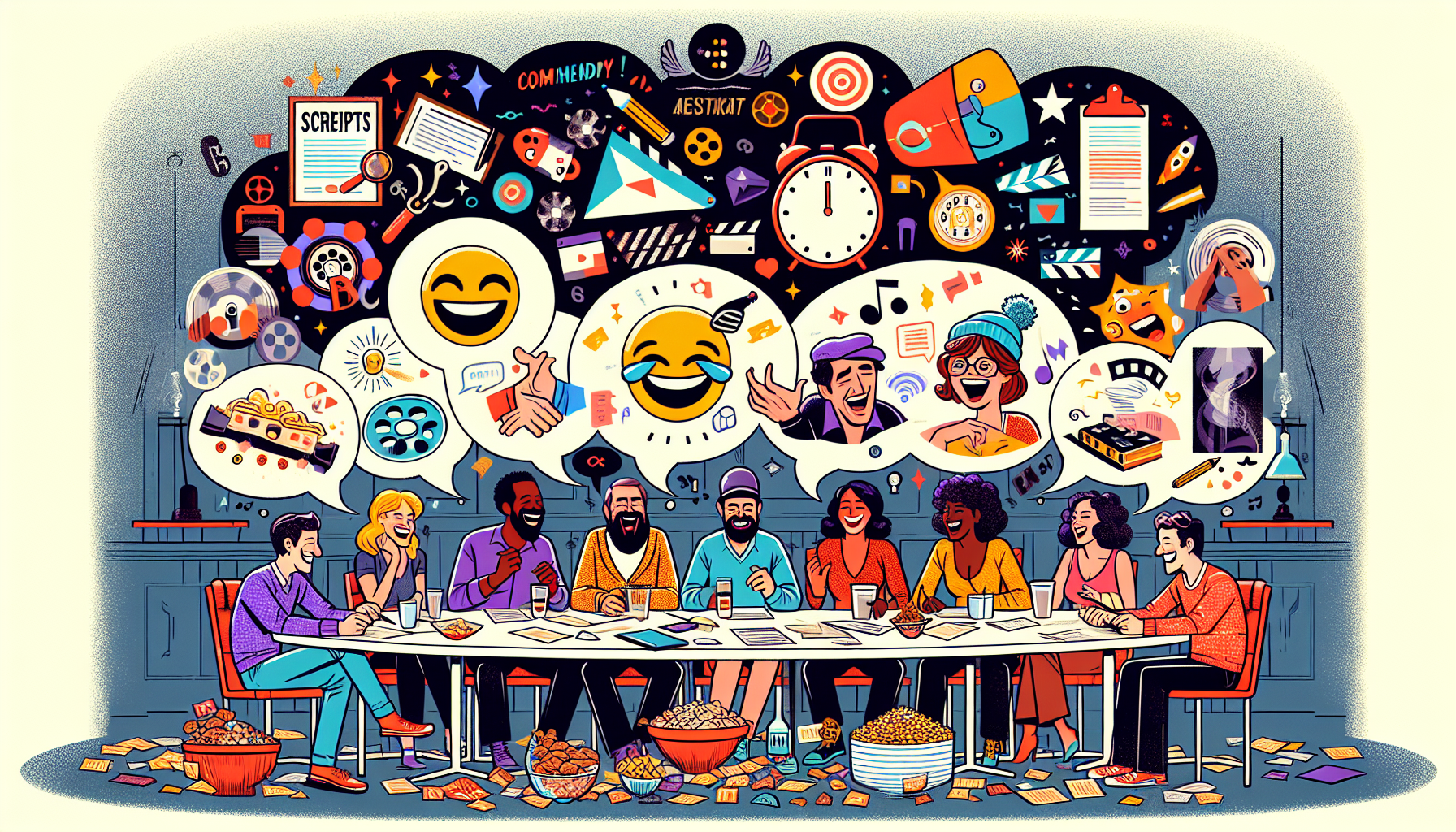
Comedy Timing and Rhythm in Screenwriting: Slapstick, Wit, and All the Pauses In Between
The Secret Ingredients of Sparkling Screen Comedy
Let’s face it, slinging zingers all willy-nilly and hoping for a chuckle just doesn’t work in the high stakes world of screenwriting. Comedy screenwriting is less about spraying gags like a garden hose and more about meticulous mischief. It’s an art, a science, and sometimes, a little bit of a dark magic.
Timing: The Heartbeat of Humor
If comedy timing had a dating profile, it would probably say, Loves long walks on the punchline and getting caught in the rain of awkward silence. Timing in comedy is about when to deliver a line, a look, or a ludicrous action. It’s the knowing pause right before the punchline, the prolonged silence as a character processes their humiliating coming-of-age epiphany, and the quick ripple of quips exchanged in rapid banter.
Here’s the gag: Timing isn’t just about speed. Sometimes, slowing a scene down to let the humor marinate in the audience’s mind gets the best laughs. It’s like telling an audience, You’ll get it… Wait for it… There it is! And then they’re gasping for air as laughter overtakes them like a friendly boa constrictor.
Rhythm: The Swing of the Screenplay
Rhythm in screenwriting is the cousin that timing forgot to mention at the family reunion. It’s all about the flow, baby. A good comedic rhythm involves variably cycling between fast-paced conversations and slower, more digestible moments that lets your audience chew on the humor.
Imagine your screenplay as a dance number. If every step is a high-kick, your dancer’s (reader’s) legs will be exhausted, and nobody wants that. Instead, mix it up with some smooth side-steps, a tap here, a twirl there. Diverse rhythms keep the comedy fresh and engaging.
Mastering the Pause: The ‘Wait For It’ Factor
If comedy had a weapon of choice, the dramatic pause would be a ninja’s throwing star. Mastering the art of the pause allows the tension to build, giving the comedy a much bigger payoff. Think of Basil Fawlty desperately gripping his rage while the world crumbles goofily around him, then the sweet release as he unleashes a sarcastic tirade.
The magic of the pause can turn a giggle into a guffaw. Getting it right, however, is akin to baking the perfect soufflé: too short, and it falls flat; too long, and it’s as awkward as your uncle’s dance moves at a wedding.
Dialogue Dexterity
Witty banter and snappy comebacks are the tango of our screenplay dance metaphor. But here’s the jig: dialogue isn’t just what is said; it’s the volleying back and forth, the timing of interruptions, the crescendo of escalating absurdities. This is where your characters shine, their personalities dancing off each other like spicy mustard meets pretzel – an unlikely but delightful combo.
Consider Rosalind Russell and Cary Grant in His Girl Friday. The rapid-fire exchange doesn’t just show their chemistry but also sets a rhythm that keeps audience’s neurons firing in joyful anticipation of the next volley.
Visual Gags: A Comedy Double Whammy
Because screenwriting isn’t just about what’s heard but also what’s seen, visual comedy is like the secret sauce drizzled over the humor feast. A character might be delivering a heartfelt eulogy, oblivious to the chaos of a cat wreaking havoc in the background. This interplay between what’s being said and what’s being seen can orchestrate some of the funniest moments in film.
Visual humor works because it speaks directly to the subconscious, often before the intellect kicks in to process it. Think of Chaplin’s factory worker desperately trying to keep up with the conveyor belt in Modern Times—the physicality and facial expressions deliver humor in a universally digestible format.
K.I.S.S.: Keep It Subtly Slick
Finally, the underlying thread in mastering comedy timing and rhythm in your screenplay? Subtlety. Comedy is not about using a megaphone to announce the joke that’s coming. It’s about the gentle nudge, the light bulb moment when the audience puts two and two together and can’t help but explode in laughter.
In comedy, like in magic, the hand is quicker than the eye. It’s the setup, the sleight of hand, and then—presto!—the laugh appears as if out of thin air. So, keep your script slick but subtle, and let the audience find the funny at just the right moment. After all, isn’t a sneak-attack giggle always the best kind?
Now, go forth and let your comedy flag fly high! Deliver those punchlines with gusto, but remember the rhythm of the reveal. And never forget, in the lexicon of great comedic screenwriting, timing is truly everything.






